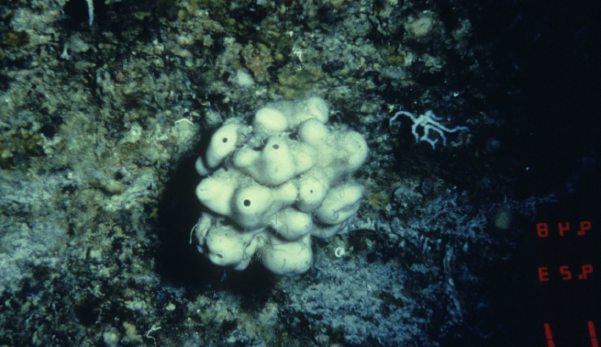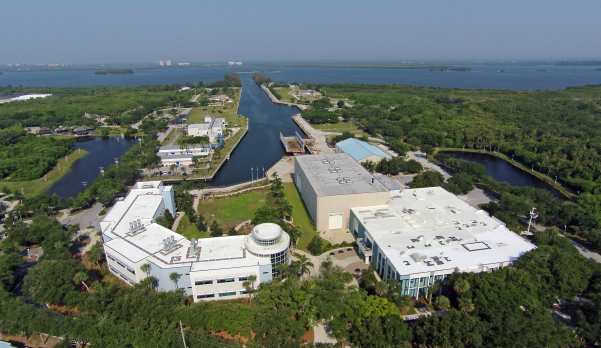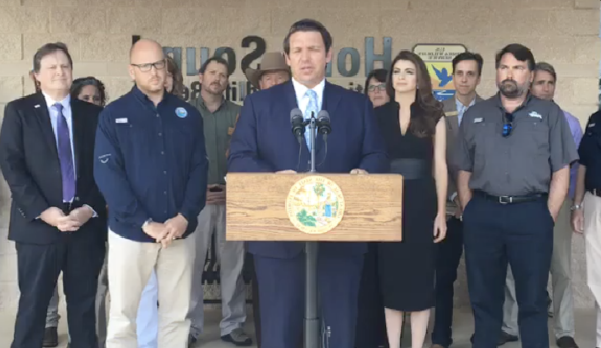Now more than ever, there is a critical need to understand the ocean, and how to best manage this complex ecosystem for benefit of society,”— Jim Sullivan, Ph.D., executive director of FAU Harbor Branch Oceanogrpahic Institute.
FAU Harbor Branch Oceanographic Institute is celebrating 50 years of groundbreaking research and exploration to address the critical issues facing the oceans and impacting human health and well-being.
Founded in 1971, then named as Harbor Branch Foundation (HBF) and later as Harbor Branch Oceanographic Institution, the 144-acre campus along the Indian River Lagoon became a part of FAU in 2007 to expand its research and education efforts. Now, FAU Harbor Branch currently conducts about one-third of FAU’s research activity, in five key areas: ocean and human health, aquaculture innovation and food security, technological innovation and national defense, marine ecosystem conservation and education and outreach. The makeup consists of more than 200 scientists, engineers, educators, staff and students.
From developing new cancer therapies, to working on cutting edge aquaculture techniques for global food security, to tackling toxic algal blooms, the mission of FAU Harbor Branch is simple: Ocean Science for a Better World.
“We want to help the world,” said Jim Sullivan, Ph.D., executive director of FAU Harbor Branch. “More than 70% of the Earth’s surface is ocean. Our weather, our food, our very lives are dependent on the ocean.”
Ocean Science for a Better World












Part of that mission includes outreach and education efforts to foster the next generation of ocean stewards, as well as training future scientists through pre-collegiate, collegiate and graduate programs. “We’re a research institute, but if no one knows what we are doing or why it’s important, we’re spinning our wheels,” Sullivan said.
HBF was founded in 1971 by J. Seward Johnson, Sr., heir to the Johnson and Johnson pharmaceuticals fortune, who had a passion for sailing and the ocean. He teamed up with Edwin A. Link, inventor of the flight simulator, whose passion for sea exploration and engineering complemented Johnson’s vision.
This partnership revolutionized deep-sea exploration as Edwin Link invented and built two Johnson-Sea-Link (JSL) submersibles in 1971 and 1975. Their two-meter diameter acrylic spheres allowed scientists a nearly 360-degree view of life down to 900 meters under the sea. FAU Harbor Branch was among three organizations in the nation, and six in the world, that ran manned deep-sea submersible research vehicles at that time. These were also the only submersibles in the world with lockout capabilities, in which divers could make dive excursions out of the subs to depths of 600 feet.
Together the JSLs made more than 9,000 dives worldwide, led by more than 3,000 scientists, spanning more than three decades.
The JSLs enabled biologists, geologists, archaeologists, engineers, resource managers, educators and students to witness new species and unlock the mysteries of the deep sea.
It was these subs that helped John Reed, a research professor and principal investigator for the FAU Harbor Branch’s Robertson Coral Reef Research and Conservation Program, discover the Oculina Bank, the deep-water ivory tree coral reefs off Florida’s east coast, which exist nowhere else on Earth. That discovery directly resulted in the protection of fragile deep-water coral habitats, including the world’s first marine protected area for deep-sea corals.
“Every time we dived with the JSLs, we saw things no one had ever seen before. We discovered new reefs, new species and new bioactive compounds,” said Reed, who joined FAU Harbor Branch in 1976. Now, Reed continues to explore the reefs using advanced technologies thanks to remote sensing and automated underwater vehicles.
In 1984, FAU Harbor Branch launched the SeaPharm Project (now called the Marine Biomedical and Biotechnology Research (MBBR) Program) to collect marine organisms, including deep-sea sponges. Since then, scientists have amassed more than 30,000 samples of marine invertebrates and algae, and 19,000 microbial cultures to find possible disease fighting chemicals, many of which were collected by scientists while diving the JSL submersibles.

In 2007, after decades of collaborative research and educational partnerships, Harbor Branch joined Florida Atlantic University. Today, the campus encompasses 144 acres and hosts nearly 300 employees, students and volunteers. The institute is a leader in marine science research and ocean engineering, with many high school, collegiate, post-doctoral and public education programs.
Scientists with the MBBR Program have found sponges that show activity against the deadly antibiotic-resistant staphylococcus bacteria, methicillin-resistant Staphylococcus aureus (MRSA), as well as a lesser-known bacterium that causes problems for people with cystic fibrosis and other diseases. One compound, discodermolide, a natural product from a Caribbean sponge that attacks cancer cells, made it to phase 1 clinical trial.
As a sponge expert, Shirley Pomponi, Ph.D., a research professor at FAU Harbor Branch in the MBBR program, was recruited in 1984 to help organize the sampling efforts and identify specimens that contained promising chemicals. “I have been part of a dedicated team that has discovered marine-derived chemicals that will benefit human health, and that’s been extremely satisfying,” she said.
Additionally, in 2019, after 19 years of trying, she was able to get a cell line from sponges – which allows her to get chemicals from the cells rather than needing to collect living sponges. To Pomponi, achieving that was like finding the Holy Grail, she said. “Now, there are all kinds of really interesting hypotheses to test,” Pomponi said. For her, that means she can now help find ways to restore and conserve habitats dominated by sponges but impacted by hurricanes, disease, or algal blooms by being able to grow and plant them out in the wild by constructing mini sponges from the cells using 3D bioprinters.
For many at FAU Harbor Branch, collaboration is at the heart of opportunity. Brian Lapointe, a research professor at FAU Harbor Branch, for example, has been able to publish groundbreaking papers due to long-term data collection. Most recently, with 30 years of unique data from Looe Key Reef in the lower Florida Keys, he discovered that the problem of coral bleaching is not only due to a warming planet, but also because of excess nitrogen in the water. “Working at FAU Harbor Branch has afforded me the opportunity to do really unique, long-term research,” Lapointe said.
Dennis Hanisak, Ph.D., who started in 1977 as a postdoctoral researcher and is now a research professor at FAU Harbor Branch and director of the Indian River Lagoon Observatory (IRLO), specializes in the study of marine plants,
like seagrasses and seaweeds. For many years, Hanisak said that the plants were often overlooked, despite their importance as nursery grounds for fish and other animals. In the last few years, he created an innovative seagrass nursery, because the marine plants are disappearing in the Indian River Lagoon due to algae blooms and the ongoing pollution issues. “And flashforward now, everyone is talking about them because they’re all gone, and manatees are dying because they’re starving,” said Hanisak, adding seagrass is the main food source of Florida manatees.
Like Lapointe, Hanisak has seen the natural world change before his eyes faster than he ever thought possible. He too worked on the Florida reef and “it died before my eyes,” he said. Throughout Hanisak’s career, he has seen new fields emerge like restoration ecology and conservation biology that weren’t around when he started, to address these threats due to human activity.
The work of scientists like Hanisak, Lapointe and others is critical for marine ecosystem conservation. Results from these studies help inform policy makers as they develop sound conservation, management and restoration strategies to protect and save our oceans.
“Now more than ever, there is a critical need to understand the ocean, and how to best manage this complex ecosystem for the benefit of society,” Sullivan said. “FAU Harbor Branch was founded in the spirit of ocean exploration to unveil the mysteries of the deep. To this day, the institute relentlessly pursues innovative ocean research, while providing top-tier educational programs that will lead us to solve the most pressing issues facing our oceans.” ♦
For more information about the 50th celebration, visit o3pl.bjtvalve.com/hboi/.

